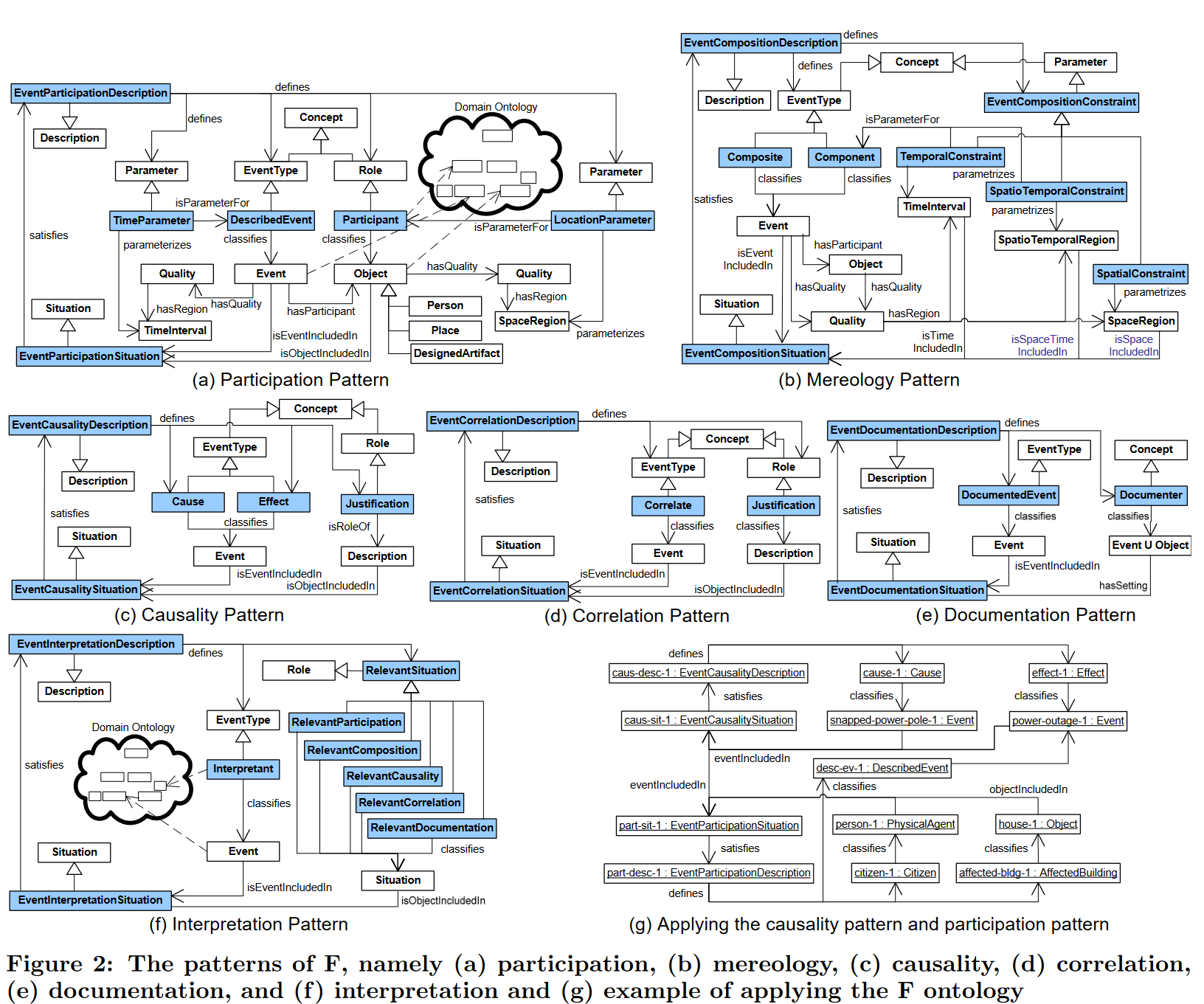F—A Model of Events based on the Foundational Ontology DOLCE+DnS Ultralite
- https://www.researchgate.net/publication/220916829_F_-_A_model_of_events_based_on_the_foundational_ontology_DOLCEDnS_ultralite
- subject: Event Model F

Abstract
The lack of a formal model of events hinders interoper- ability in distributed event-based systems. In this pa- per, we present a formal model of events, called Event- Model-F. The model is based on the foundational ontol- ogy DOLCE+DnS Ultralite (DUL) and provides com- prehensive support to represent time and space, objects and persons, as well as mereological, causal, and cor- relative relationships between events. In addition, the Event-Model-F provides a flexible means for event com- position, modeling event causality and event correla- tion, and representing different interpretations of the same event. The Event-Model-F is developed following the pattern-oriented approach of DUL, is modularized in different ontologies, and can be easily extended by domain specific ontologies
Highlights
- Event Driven Architecture typically focus on processing low-level signals and actions, i.e., technical events that happen within computerized systems
- this ontology describes high-level occurrences in which humans participate
- we follow DOLCE+DnS Ultralite’s design decision and distinguish events from objects.
- By this, we can be precise about the relationships that can occur between events and objects
- The most comprehensive list of functional requirements are the six aspects defined for the event model E [29] and the journalism interrogatives of the Eventory sys- tem [28].
Functional Requirements
- Participation of Objects
- Temporal duration
- Spatial extension
- Structural Relationship
- mereological
- causality
- correlation
- Documentary support for events and (participant) objects
- e.g. sensor data, media data
- Event Interpretations
References
Backlinks